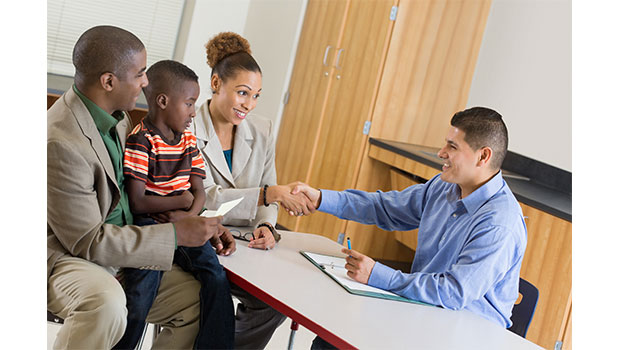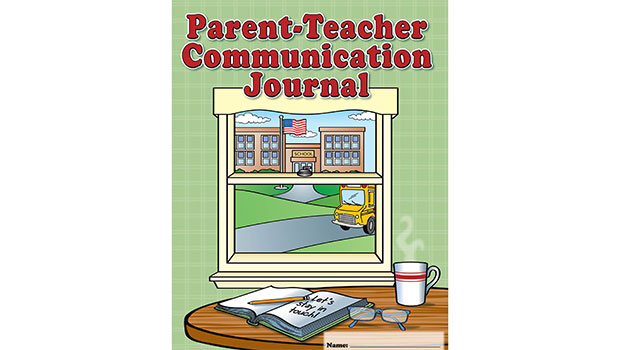
Can we just take a second and talk about how very important parent communication is? I always knew it was important to let parents know what is going on in my classroom, what we were learning or when an important school event was happening. Though I must be honest with you, it wasn’t until I had a child of my own attending school that I soon realized it was even more imperative to have open communication with parents or guardians. Children spend more time with their teachers in a day than with their own parents. Therefore, it is a teacher’s responsibility to communicate with parents or guardians to help them feel more comfortable about their children being with another authority figure for the majority of the day. It doesn’t have to be anything elaborate or crazy, rather, just enough communication to let parents or guardians know what is going on in their child’s classroom and to keep them in the loop.
Old School Communication
A quick note; old school yes, but sometimes a quick handwritten note is the best way to let a parent know how their child is doing. I will sometimes just jot a quick note on a student’s paper that they’ve completed or on a sticky note. This could say anything from asking them to practice that specific skill again or letting them know their child did a fantastic job on that assignment. This makes it personal and it lets parents show that you care and work individually with their son or daughter. I have created a quick note template, which I have printed on bright paper (to help them stand out in a folder), and keep them near my small group table. I will quickly jot a little note to let a parent know how great their child did or maybe something I would like them to try to work on at home. Keeping it near my small group table means I don’t have a reason to forget, and it is easily accessible. A handwritten note means you took the time to pay attention to that student and their particular needs or achievements!

I really like my students to know that they are a piece of the communication puzzle. Though, being a special education teacher, that isn’t always the easiest thing for them. I will often use a little piece of paper that is cut into a long rectangle and attach it to their wrists. This allows them to remember something like a sight word they might need extra help with. Then, someone sees the bracelet on their wrist they can ask, what does that say, and the students gets to practice their sight word once again. You could use this method in various ways, to remind a parent about snack day, picture day or even as a quick note of praise!
Using a notebook to log daily notes for students, I record behaviors and triumphs — another way I keep it old school in my classroom. The notebook is a way to communicate back and forth, along with also just taking notes about a student to allow their parents to have a little more of an insight into their day. The notebook is sent home daily, allowing for parents to read and reply to any notes that were take about their child during the school day. Then each morning I will quickly check to see if the parents had any questions or comments about the previous day. I really like the idea of a notebook, though it is not the quickest method, it allows you to keep all notes in one spot. I find this to be an easier way to refer back and keep track of what a child does in a school day.

A communication log is also a method that could be used in your classroom. I have used this method to document student behaviors. I type up our schedule for the day then highlight which behaviors we will be concentrating on. This approach helps me easily check if the student was on task or off task, completing the activity or not, and what behaviors I noticed during whatever activity we were working on. This is a great way to communicate with parents as you break down the day and allow them to see what is going on at specific times in the day as well. This method is perfect for collecting student data and having it readily available for meetings. I make a copy of the log before I send it home to ensure I have documentation of the day as well.
Communicating in the 21st century
I’m not sure if you have realized yet or not, but I am a “paper/pencil” type of teacher. However, this school year, I have had to step out of my comfort zone and get creative with how I communicate with parents. As an inclusion teacher, I work within a general education classroom with other teachers and aides to ensure that all students are successful. This year we have adopted using Google Docs to communicate with parents. This is a document that every teacher who works with the student, along with the parents, are able to access from an electronic device, and communicate back and forth about their school day. You can use your computer, telephone or tablet to access the document. This has been a great tool to use as it is open to everyone all day long, making communication so very easy. Maybe you have students who don’t live solely with one parent, this is a great way to communicate with everyone, even if the child doesn’t see everyone every day. I am able to access these documents during my lunch break, so that I can read up on my students, check in on their day and know what has gone on so far. So not only is communication with parents happening, but also within the school. It is a working document; therefore, anyone can add to it throughout the day., So if we type something and family members read it through the day, we may even be able to respond before the student has left the building., This form of communication is a fantastic way to ensure everyone is on the same page.

With cell phones being such a large part of our reality, I have also used the app called “Remind: School Communication.” Through this app you can communicate with parents via text message without giving them your actual telephone number. I love this as a way to send quick reminders about field trips, special dress up days or even if we have an assessment the next day or that week. This allows me to send a message to all of the families or just one– straight to their phone. Using the app has allowed me to have open communication with family members at any time of the day… because let’s be honest, most people almost always have their cell phones readily available. I love to send out a quick picture if we are working super hard on a project or if we worked towards a certain goal as a class. This is just a great way to communicate with parents and families members about what is going on in our classroom.
With that being said, social media is all around us so we might as well take advantage of it. Having a class “Instagram” or “Facebook” page is a great way to allow families to keep in touch. Of course, I always keep that account private and only allowing access to families within the classroom to ensure the safety of students. This is a great way to share photographs or quick reminders of what is going on in your classroom. Students also love to see pictures of themselves and of the hard work they have completed. We don’t always send projects home right away, so we can share thembeforehand. Having photographs for parents, guardians or family members to see is a great way to allow families to start conversations around the dinner table about what is going on at school. Think about this, you just had a school assembly or the principal was your guest reader in class that day, wouldn’t that be a fun way to document the exciting news?
Simply put… communicate!
I have had so many conversations with my own son (who is in preschool) asking him about his day. Before, I was just trying to figure out what he did or what he’d learned. But now, with all of the various ways of communication, I can ask him to tell me about a specific activity that I have seen on his classroom blog or school-wide Instagram. It’s vital to understand that you may have to choose more than one way to communicate because not every way will work for every family member. If teachers can find at least one way to communicate with the families, we’ve allowed them to step into our classrooms. Once we learn which communication method is best with family members, the families have insight into their child’s school day and, ultimately, can be a part of their education.